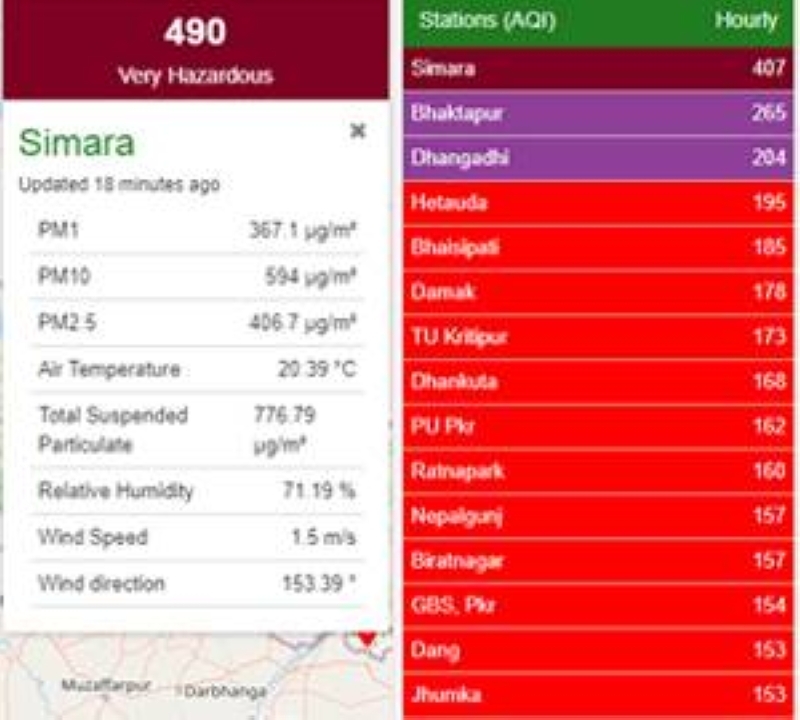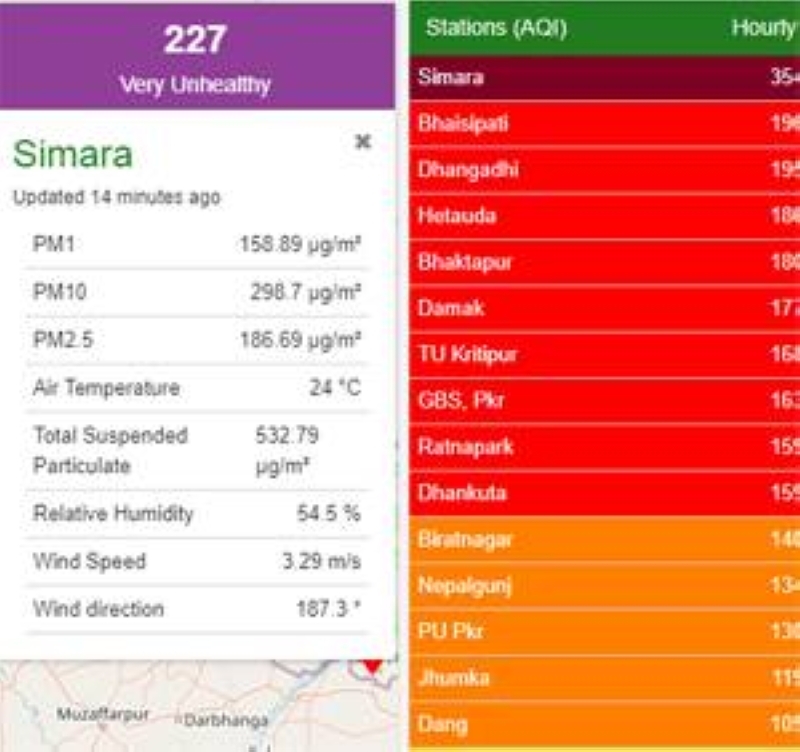Air Pollution rampant in the cities of Nepal
KATHMANDU, MARCH 25
As people fear another wave of Covid-19 a year after the government first imposed restrictions in the country, another health concern related to respiratory illnesses caused by toxins in the environment has come to the fore
Measurement of air quality through the Air Quality Index (AQI) in city areas of the centralised valley, along with few areas of the Tarai region, shows that air pollution has become rampant. While the quality of air in some of these places has degraded tremendously, air quality in other places is becoming increasingly unhealthy.
As we see the readings from air quality metres located in various stations of the country, we find that Simara has the poorest air quality. Hourly AQI data showed Simara's air quality as very hazardous at 8:00 am. The World Air Quality Project's index stood at 515 at that time while that of the Department of Environment (DoE) stood at 490.
At the same hour, Bhaktapur's air quality degraded as low as 347 (according to The World Air Quality Project) while as per DoE's data it stood at 348.
Similarly, Dhangadhi was third in line to have the most degraded air quality among the list of stations measuring the AQI. The index stood at 214 as per DoE's data.


One hour later, at 9:00 am, the air quality at Simara was recorded at 354; second on the list was Bhaisepati in Lalitpur at 196 and third was Dhagadhi at 195 (Department of Environment).
Though the readings slowly became less alarming after the morning hours, at 10:00 am and onwards, the readings for Simara was still lingering above 300; others (stations mentioned above) showed the index between 151 to 200.
The values between 151 and 200 are categorised as unhealthy. This index is coloured red. In this level of air quality, everyone may begin to experience health effects; members of sensitive groups may experience more serious health effects.
The measurement between 201 and 300 is said to be very unhealthy (purple) and states 'health warnings of emergency conditions'. The entire population is more likely to be affected. At this level of air quality, it is better that active children and adults, and people with respiratory disease, such as asthma, avoid prolonged outdoor exertion; everyone else, especially children, should limit prolonged outdoor exertion.
Between 301 and 400 (maroon), the air quality is at a hazardous level; it has more severe health implications. Health alert must be imposed on everyone as everybody is prone to experience more serious health effects. Therefore, it is advised that everyone should avoid all outdoor exertions. The level between 401 and 500 is very hazardous. This is also indicated in maroon.
Despite the fact that most people in our country are breathing the air with such perilous level pollution, we still lack the vigour to act responsibly against the situation.
The visibility in Kathmandu valley has degraded to a significant level. Only a year ago, snow clad mountains shone brightly in the winter and we could see the mountains and hills clearly. But this winter, the haze barely let us see through it. The haze has become a part of our environment, impeding our view and lowering our visibility.
Department of Environment on January 5 had released a statement mentioning about the change in weather condition in the country and increasing level of pollution in Kathmandu valley.
The statement declared that the level of pollution in the valley is increasingly -- especially in the mornings and the evenings -- creating negative implications on people's health.
It said that air pollution is dependent on weather system, and due to this fact, the pollution may last for some time or may worsen further with the passing of time. About three months later, at the present time, the pollution seems to have worsened.
Efforts for improving air quality should be of utmost priority now so that safety of citizens' health can be ensured.
Compiled by Kriti Joshi








